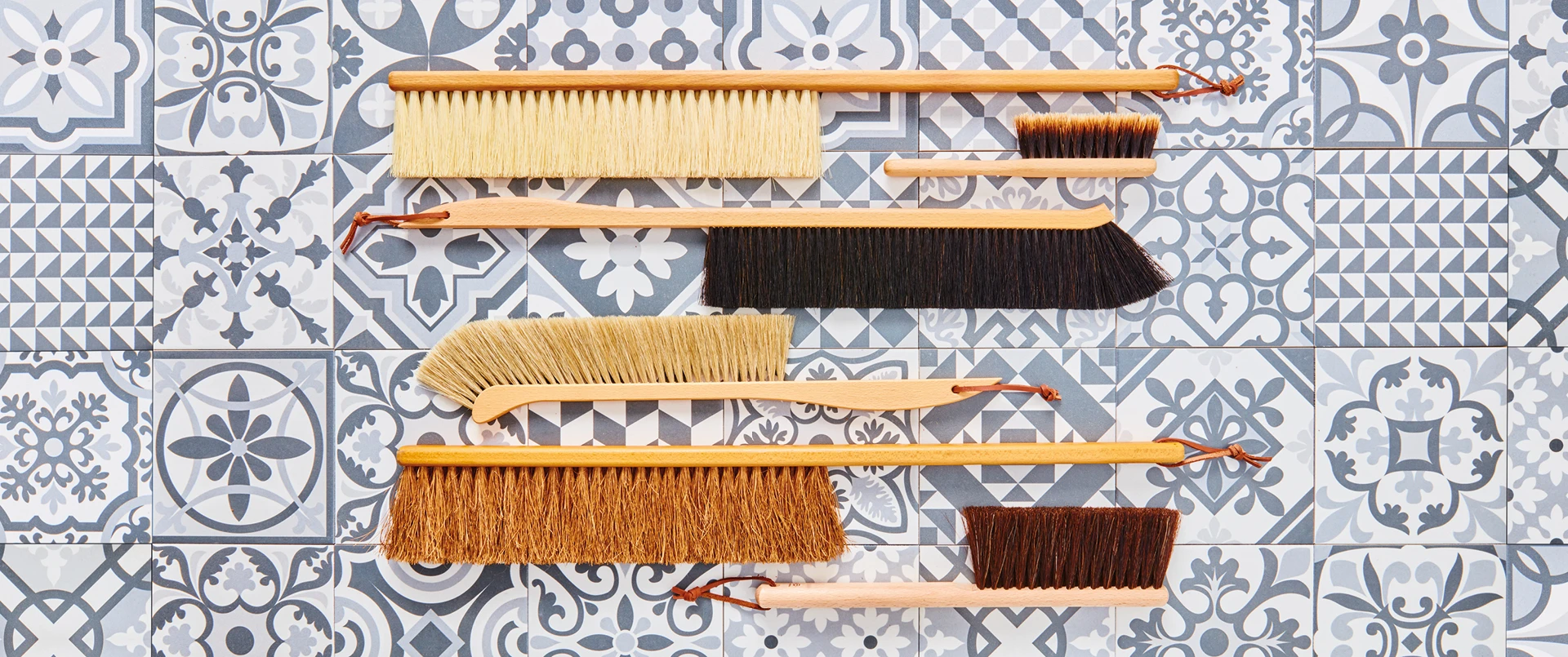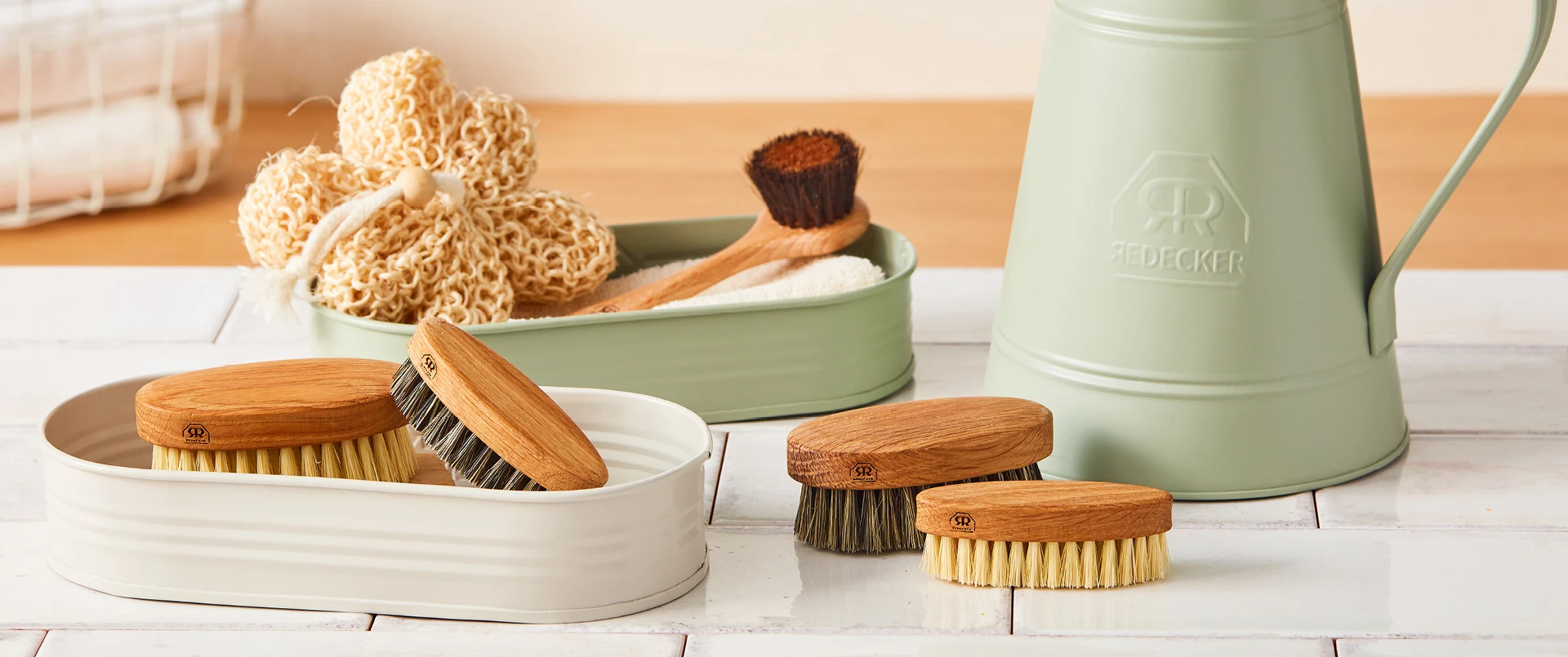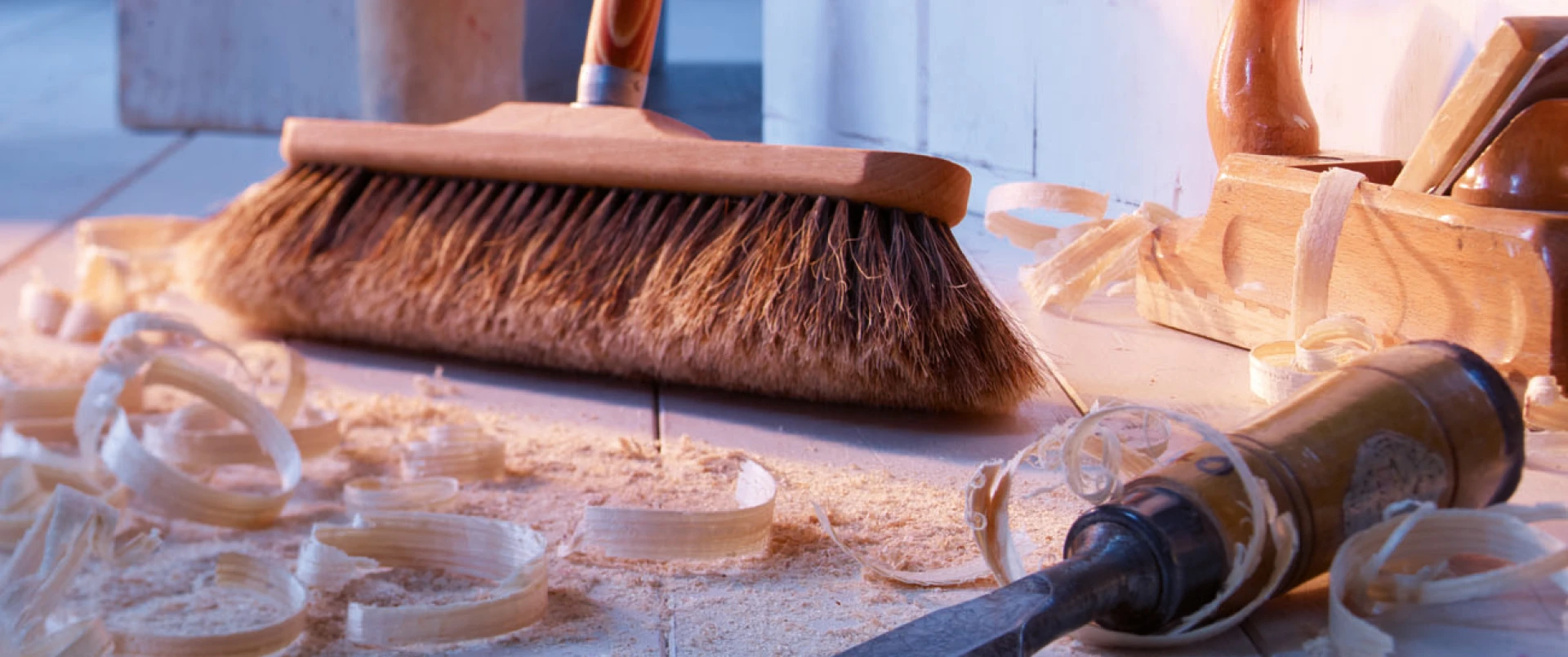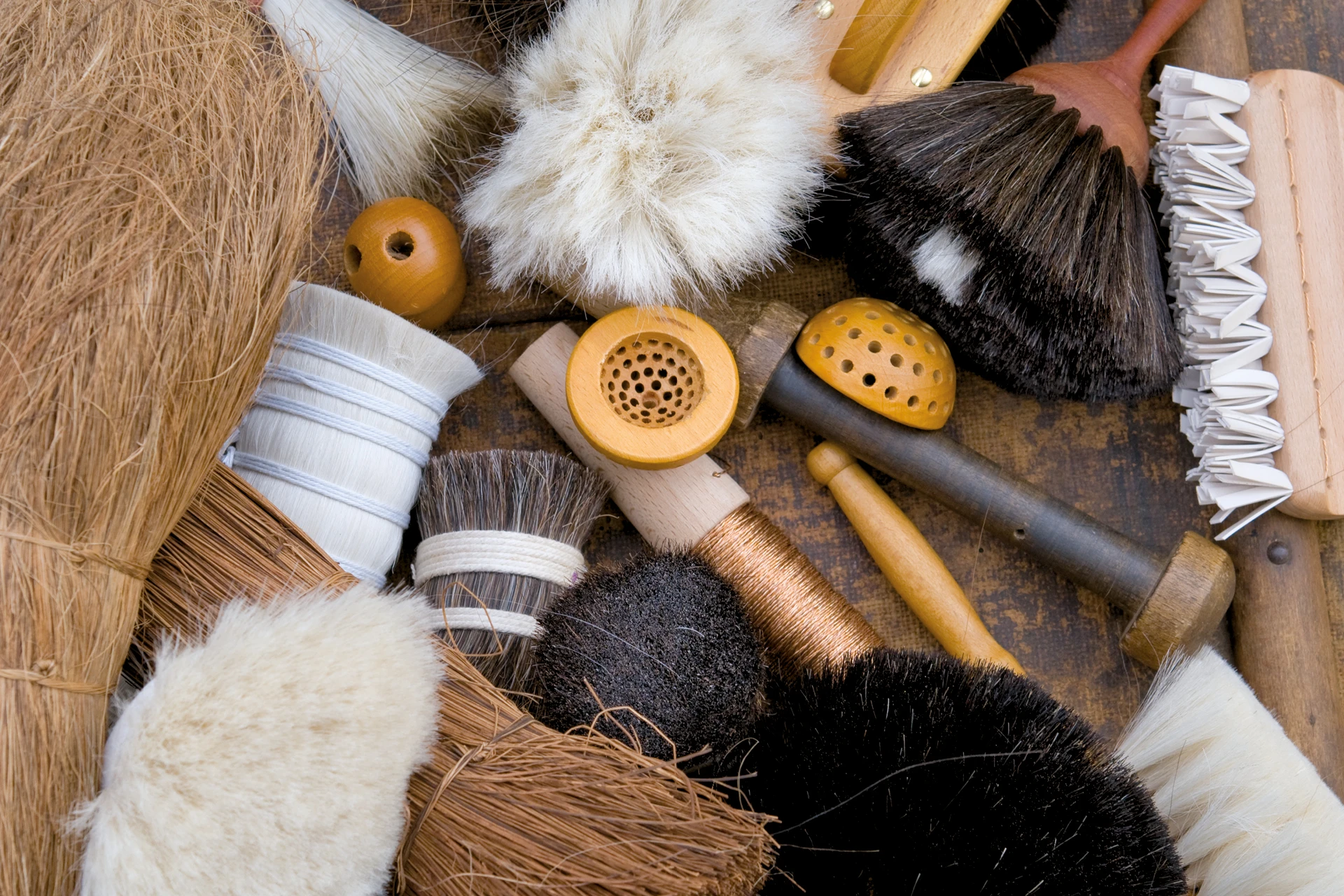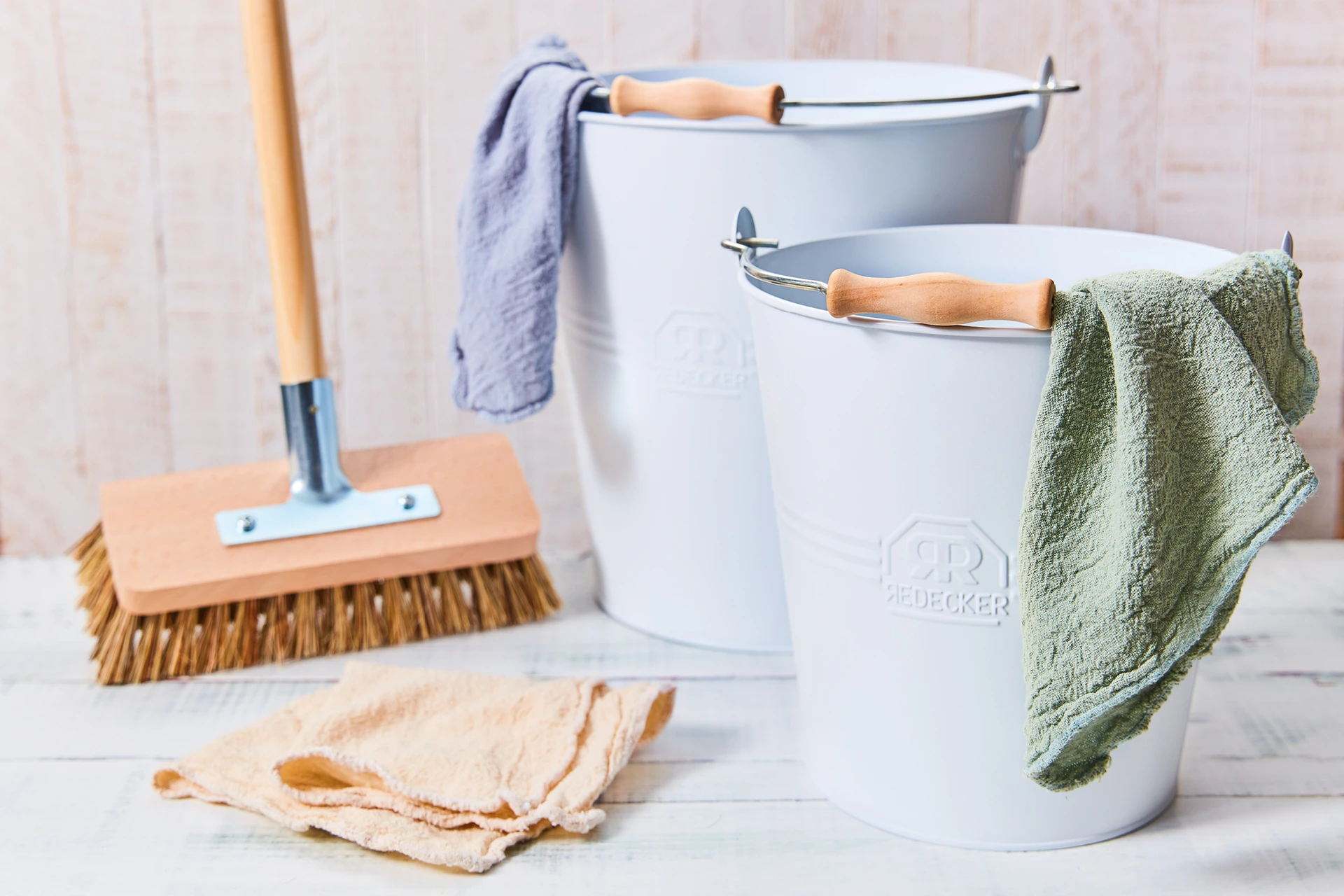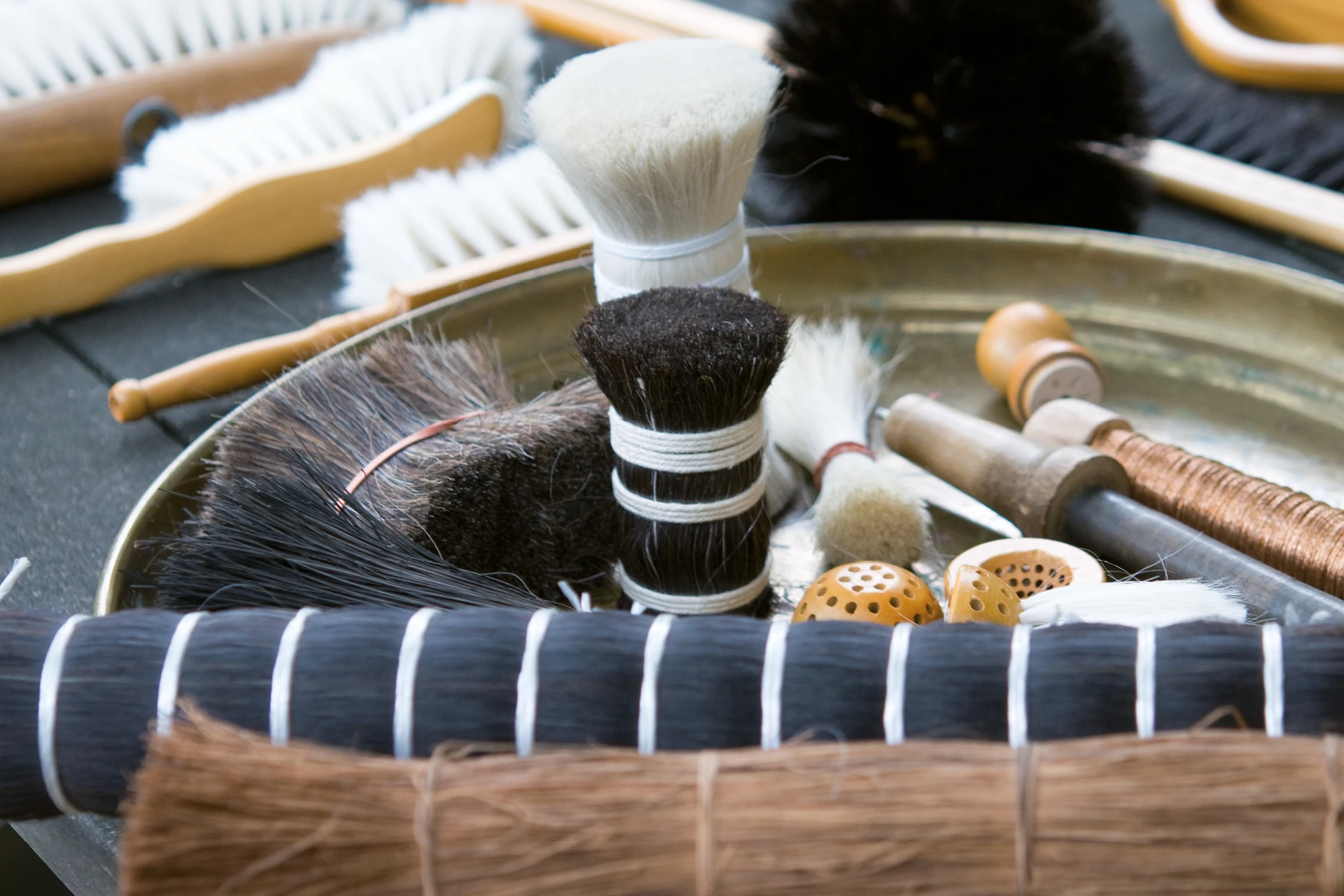Sustainability: a global issue (28.03.2025)
Guide , Materials knowledge , Brush production
We are often asked where we source our natural materials from, how they and then our products are manufactured and what the social conditions are like for their production. This cannot be explained in one sentence. But we try to keep it short.
Cleaning, scrubbing, scouring: Which brush for which purpose? (05.03.2025)
We are often asked: How many brushes do you actually need in the household? Do I really need a separate tool for every purpose? Here is the ultimate brush advice!
What makes a brush a Redecker brush. (20.07.2023)
Guide , Materials knowledge , Brush science
Our brush materials come from around the world: depending on climate and requirements, animals and plants have adjusted to the local conditions. Today, they help us with their highly specialised materials. We just need to look for them …

